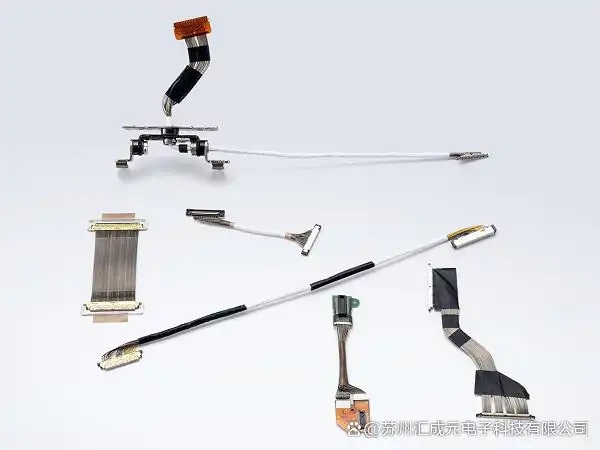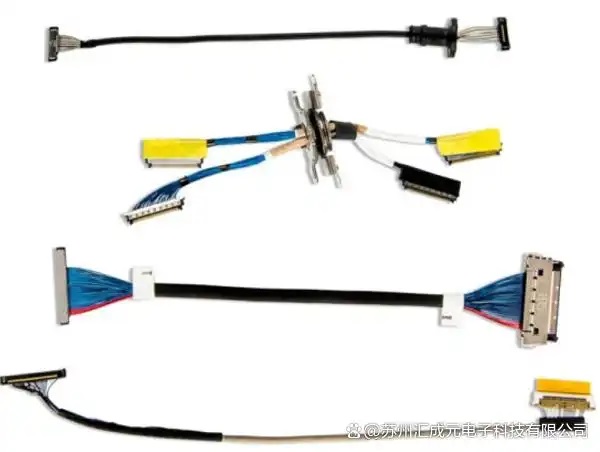In miniaturized electronic products such as tablet computers, high-definition display modules, camera components, and high-precision medical equipment, ultra-fine coaxial cables (Micro Coaxial Cable) are widely used for high-frequency signal transmission due to their ultra-fine, lightweight, high-speed transmission, and strong anti-interference characteristics. Common wire diameters range from 0.3mm to 1.2mm, and their internal structure usually consists of a central conductor, insulation layer, woven shielding layer, and outer sheath. The structure is similar to that of a standard coaxial cable, but it is more delicate and flexible, suitable for applications with limited space.

The common causes of overheating and heat generation in extremely fine coaxial cable bundles
In practical applications, if extremely fine coaxial cable bundles have heating issues, it may lead to unstable signals, abnormal images, and even damage to devices. The following is an analysis of the common causes:
Current overload
The rated current of extremely thin coaxial cables is usually only 0.3A~1A. If the working current exceeds the rated value, the resistance heating inside the conductor will significantly increase.
Performance: After long-term operation, the wire material becomes hot even softens and deforms.
Poor grounding or excessive contact resistance
When there is a weak solder joint, oxidization, or loose plug or terminal, contact resistance will occur, causing local overheating.
Performance: A certain joint of the hair is烫,accompanied by phenomena such as unstable signal or flickering of the picture.
Improper wire selection
If the wire gauge (AWG) is too small or the material quality is poor (high conductor resistance, sparse shielding layer), it is more prone to generate heat in long-distance or high-frequency transmission.
High ambient temperature, poor heat dissipation conditions
When used in sealed spaces or high-temperature equipment cavities, heat is not easy to dissipate, and the cable束 is prone to accumulate heat and increase in temperature.
High-frequency signals cause medium loss
The extremely thin coaxial cable will experience increased insulation and conductor losses (loss) when transmitting high-frequency signals; the higher the frequency, the more obvious the heat generation.

Solution and Optimization Suggestions for Heating of Extremely Fine Coaxial Beam
Select reasonably
According to the system's current, voltage, and signal frequency, select the appropriate wire gauge, shielding density, and temperature resistance grade to ensure that the wire material has sufficient margin.
Optimize welding and connection technology
Ensure that the solder joints are full and firm, and the terminal connections are reliable, to avoid false soldering or cold soldering, thereby reducing contact resistance from the root.
Regularly inspect connection points to prevent local overheating due to oxidation or loosening.
Reasonable wiring and heat dissipation design
Avoid the harness from being close to power devices or heat sources, ensuring good air circulation.
Thermal radiators, heat-conducting pads, or insulating thermal barriers may be added as necessary to improve the system's thermal management level.
Reduce signal frequency or use segmented transmission
For high-frequency signals, minimize the transmission distance as much as possible, or reduce medium loss by segmenting and transferring.
Add protection and insulation measures
In high-temperature or high-reliability scenarios, thermal shrink tubing and high-temperature insulation sleeves can be added on the outer layer to further enhance the heat resistance and stability of the wiring harness.

Extremely fine coaxial cables, although compact in size, bear critical signal transmission tasks. Improper handling in selection, welding, wiring, or thermal management can easily lead to overheating or even failure. Therefore, engineers should conduct electrical and thermal environment assessments in advance during the product design and debugging stages, scientifically match wire specifications and materials, and optimize the connection structure and heat dissipation layout to ensure the long-term stable operation of the equipment.
I am Kunshan JieKangFu Precision Electronics, focusing on the design and customization of high-speed signal cables and ultra-fine coaxial cables for a long time, committed to providing stable and reliable high-speed interconnection solutions to customers. If you have any related needs or want to learn more, please contact: Manager Yin.
18913280527 (WeChat number). 

